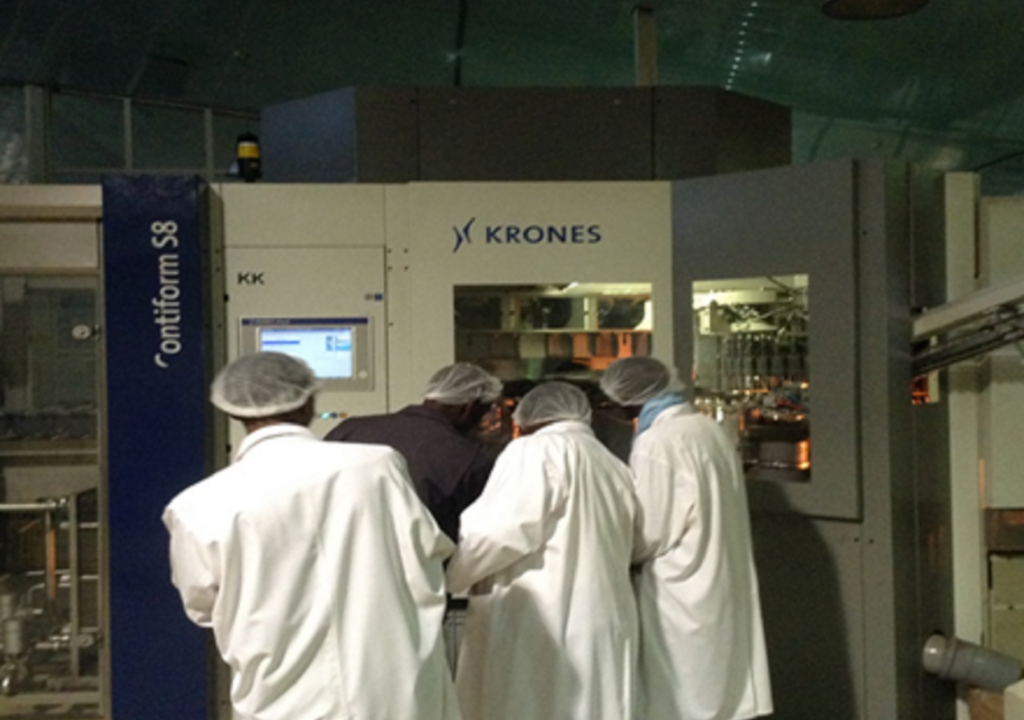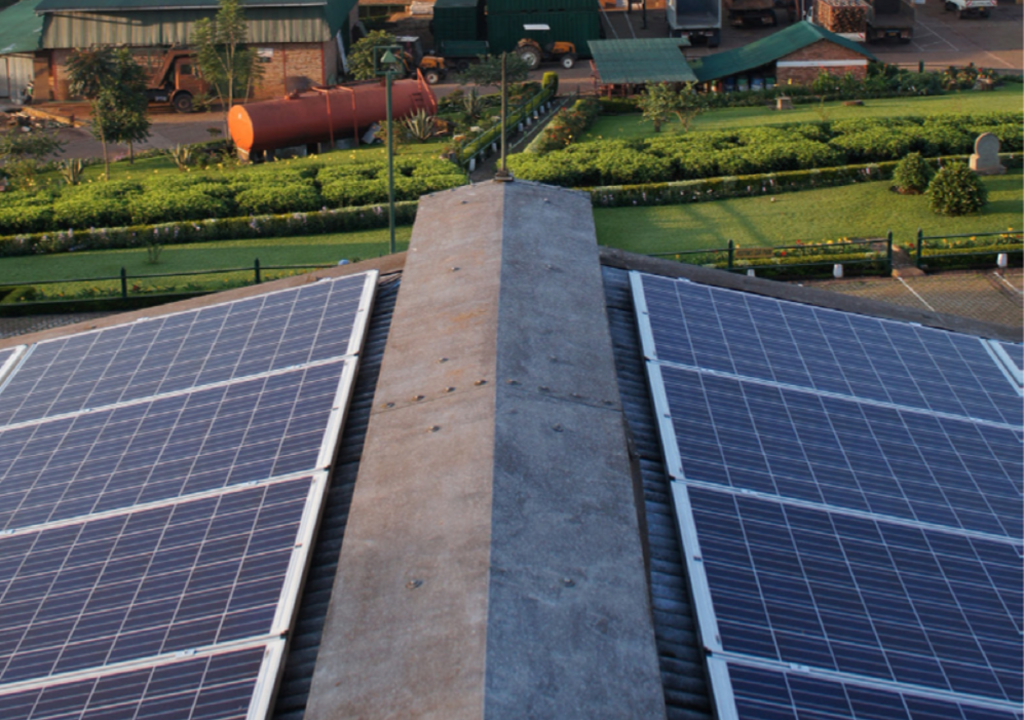
The Cleaner Production and Climate Innovation Centre (CPCIC) was established in 2019 to operate as a government-owned company under the National Industrial Research and Development Agency (NIRDA).
CPCIC was a result of reforms in the then Rwanda Resource Efficiency and Cleaner Production (RRECPC) that was fomed in 2008 and the long-envisioned Climate Innovation Centre (CIC).
The CPCIC came into act at a time when Rwanda, through the Kigali Amendement signed in 2016, lead a global ambition to implement the Paris Agreement to cut levels of green gas emissions and becoming the first African country last year to submit a tougher climate target to the United Nations (UN), promising to cut emissions at 38% by 2030.
According to Dr. Christian Sekomo Birame, the Director-General of NIRDA, the objective of CPCIC is to ensure that the Rwanda attains its green growth ambitions and deliver technical support, policy advice, technology transfer, and training that promote resource efficiency, cleaner production and climate and environmental friendly technologies.
“The Centre is a valuable partner in our race to improve industrial competitiveness and productivity through the use of green technology,” he said.
Birame said that the centre supports Rwanda’s industries, small and medium-sized enterprises (SMEs), organisations and institutions – both private and public- to be able minimise a negative environmental impact while saving on resources such as raw materials, water, energy and turning waste into by-products, which reduces costs.
CPCIC works with the government and regulatory bodies to develop policies, strategies, guidelines and standards to foster climate friendly solutions and support the journey to achieve green growth.
Officials say that through CPCIC services such as advisory, technical and capacity building the centre will enable Rwanda to attain its goals in the Green Growth and Climate Resilience National Strategy for Climate Change and Low Carbon Development that was released in October 2011.
The Strategy aims to build upon work that is already being done in Rwanda on climate change, focusing the various projects and policies in a holistic national document which encompasses the long-term direction as well as short-term priority actions.
The strategy is one of the initial steps on a pathway which leads to a sustainable, secure future where Rwanda is prepared for the risks associated with climate change, population growth and rising oil prices.
The strategy represents a critical step on the pathway to achieving sustainable economic growth based on building strong systemic climate resilience linked with deliberate low carbon production and lifestyle patterns.
The strategy shall also provide for mechanisms to mobilize funding to finance programs identified in the process and a roll-out that will contribute to boosting employment, especially for youth, women and other groups.
To achieve its objectives, Sylvie Mugabekazi, the Technical Expert at the CPCIC, says the Centre offers technical training on cleaner production around energy, water, materials and resources as well as waste management and the adoption of climate resilient technologies.
“We provide business advisory services to the private sector through in-plant assessments. Our goal is to improve their business processes and optimise productivity gains from the adoption of cleaner production and climate resilient technologies,” she explained, saying this reduces levels of industrial pollution and greenhouse gases that are causing climate change.
The Centre’s advisory services include advice on green technology, market and customer needs, business incubation as well as business development, strategy and planning, team development, and fundraising advice, among others, to help businesses grow.
The Centre offers tailored support to start-ups to put in place proper infrastructure and management systems, as well as business networking support.
It also offers industries, SMEs and start-ups opportunities to access technical and technological skills that allow the transition and shift to climate innovative concepts and technologies which leads to stronger financial sustainability and environmental competitiveness and compliance.
“The Centre will also facilitate access to global and national green investment and de-risks public and private green projects and investments by advising on the design of projects and applications,” Mugabekazi said.

The CPCIC services are available for business and institutions in all sectors of Rwanda’s economy, especially agriculture, energy, transport, environment, urbanization, water and waste.
“More innovative clean processes and technologies are crucial as we transition our production processes to adopt a circular model, which calls for systems and processes that keep resources in use for as long as possible, extract the maximum value from them while in use, then recover, re-use and recycle waste into new products at the end of each service life,” Mugabekazi said.
The CPCIC works with the government and regulatory bodies to develop policies, strategies, guidelines and standards to foster climate friendly solutions and support the journey to achieve green growth.
How industries are Benefiting
Mugabekazi said that industries, SMEs and organisations working with the Centre are seeing significant financial benefits in the form of savings, increased productivity and reduced resource use.
For example, 142 industries that participated in the Resource Efficient and Cleaner Production Programme over the past decade have saved US $ 6.5 million (about Rwf6.5 billion) after adopting cleaner practices.
“These industries are also making a huge impact in terms of reducing their contribution to climate change, with at least 30,000 tons of carbon dioxide emissions avoided every year,” she said.
These benefits are from diverse sectors such as food, textiles, tea and coffee, textile, beverages and plastic packaging.
“This is the success story that encourages us to keep going forward. We have seen how industries are gaining in terms of production and income while adopting environment-friendly practices and technologies. By encouraging the adoption of green technologies, clean processes and the circular economy, we will further speed up the process of achieving green growth in Rwanda,” she said.
Since 2008, many industries, SMEs and dozens of institutions were supported to streamline water and energy use, promote efficient use of resources, minimize and where possible eliminate waste, ensure high productivity, create green jobs and maximize profitability while mitigating the damage from climate change.
At least 41 million mega joules of energy is saved and 22,390 tons of solid waste is reduced every year thanks to the adoption and implementation of resources efficient and cleaner production (RECP) practices / technologies, circular economy and innovation. Over 241,952 cubic metres of waste water is also reduced and 153,175 cubic metres of water is saved every year by industries under this programme.
In terms of capacity building at least 644 persons have been trained since 2008 while 13 districts, five academic institutions and 29 public institutions were introduced to resources efficient and cleaner production methods.
All this is done with a strong partnership of national and international green organizations, who pool in technical knowledge, products, and resources. These include reputable organizations such as Rwanda Green Fund (FONERWA), Global Environment Facility (GEF), Green Climate Fund (GCF), and the Global Green Growth Institute (GGGI), among others.
Building on the long-term vision for Rwanda to be a developed, climate-resilient, low-carbon economy by 2050, CPCIC expects to use its activities and services to contribute to Rwanda’s green growth agenda which multilateral sector and cross-cutting needing combined contribution from organizations, government, donors and citizen’s participation.

